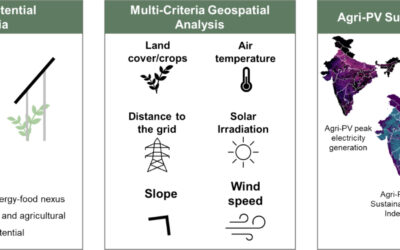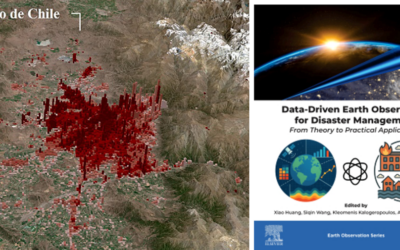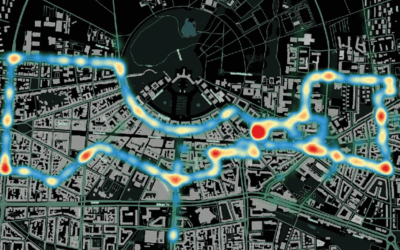New publication on global differences in urbanization dynamics from 1985 to 2015 and outlook considering IPCC climate scenarios
Researchers from the Earth Observation Center (EOC) of the German Aerospace Center (DLR) in Oberpfaffenhofen, our Earth Observation Research Cluster of the University of Würzburg, the University of Bonn and the Yale University, in New Haven, CT, USA teamed up for a study on global differences in urbanization dynamics and forecasts in relation to IPCC scenarios. The paper titled “Global differences in urbanization dynamics from 1985 to 2015 and outlook considering IPCC climate scenarios” was just published in the journal CITIES by Hannes Taubenböck, Johannes Mast, Christian Geiß, Michael Wurm, Thomas Esch and Karen C. Seto.
Here is the abstract: Cities are expanding all over the world. In this study we aim to understand how the pace and scale of urban growth dynamics vary across geographies. This study contributes to the literature in four key ways: First, the study is comprehensive including all 1567 cities worldwide that had >300,000 inhabitants in 2015. Second, comparison of settlement dynamics of cities is performed in relation to continents, to geographic regions, to national levels and to city sizes. Third, a data-driven approach to delineate city boundaries allows for consistent comparisons across geographies. Fourth, the measured past urban trends are projected into the future and linked to climate scenarios used by the Panel on Climate Change (IPCC) to estimate where spatial focal areas of urbanization and climate-change meet. The study is based on remote sensing-derived geodata such as the World Settlement Footprint Evolution dataset for the period 1985 to 2015 and morphological urban areas. The key findings are: At continental scale, highest relative urban growth rates are measured in Asia. Among the IPCC regions, highest relative urban growth rates are in East Asia. In contrast, lowest growth rates are in Oceania and Europe. As expected, across most regions, there is a general decline in relative growth rates over the study period. One surprising finding is that absolute settlement expansion rates are not declining over time, but are rather relatively constant. It is also interesting to see that across and within countries growth rates of urban settlements vary widely in Asia, whereas in Europe there are only marginal differences. And finally, a look into the future reveals that certain regions can expect particularly high exposures. In South Asia and West Africa, for example, very high urban growth rates and a very high increase in predicted maximum rainfall are forecast. The greatest increase in extreme temperatures is predicted for Europe and North America. Settlement growth has already slowed there, so adaptation measures are taking center stage.
Here is the link to the full paper: https://www.sciencedirect.com/science/article/pii/S0264275124003317
This paper is part of a long history of work on urbanization. Related papers are:
- Urbanization in India: https://www.sciencedirect.com/science/article/pii/S0198971508000604
- Monitoring megacities from space: https://www.sciencedirect.com/science/article/pii/S0034425711003427
- The development of new dimensions of urban landscapes: https://www.sciencedirect.com/science/article/pii/S0143622813002786
- The spatial network of megaregions: https://www.sciencedirect.com/science/article/pii/S0198971515300016
- Globale Urbanisierung – Perspektive aus dem All: https://link.springer.com/book/10.1007/978-3-662-44841-0
- A global inventory of urban corridors: https://www.mdpi.com/2220-9964/5/12/233
- New spatial dimensions of global cityscapes: https://link.springer.com/article/10.1007/s11442-016-1273-4
- Urbanization between compactness and dispersion: https://www.tandfonline.com/doi/full/10.1080/17538947.2018.1474957
- Patterns of Eastern European urbanization in the mirror of Western trends: https://journals.sagepub.com/doi/full/10.1177/2399808319846902
- A new ranking of the world’s largest cities: https://www.sciencedirect.com/science/article/pii/S0034425719303724
- Understanding an urbanizing planet: https://www.sciencedirect.com/science/article/pii/S0034425719301658
- Remote Sensing for the Analysis of Global Urbanization: https://elib.dlr.de/128286/
- Urbanization in China from the end of 1980s until 2010: https://www.tandfonline.com/doi/full/10.1080/17538947.2017.1400599
- Seven city types representing morphologic configurations of cities across the globe: https://www.sciencedirect.com/science/article/pii/S0264275120301347
- The urban morphology on our planet: https://www.sciencedirect.com/science/article/pii/S0034425721005149
- Measurement of the degree of urbanization: https://www.sciencedirect.com/science/article/pii/S0198971522000746
- Border regions across the globe https://www.sciencedirect.com/science/article/pii/S0143622822002375
- Searching for the DNA of urbanization: https://www.sciencedirect.com/science/article/pii/S0264275124002932









